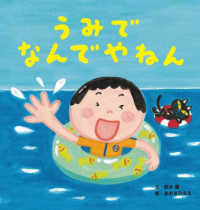Full Description
Access audio files at:https://soundcloud.com/k-chu-j-petrus/sets/singing-in-mandarin-recorded
The success of Chinese artists internationally across many art forms has focused the world's attention on the developing cultural phenomenon in China, an emerging stage for the vocal arts. As one of the most widely spoken languages in the world, Mandarin is poised to become the next addition to lyric languages. Singing in Mandarin: A Guide to Chinese Lyric Diction and Vocal Repertoire is a comprehensive guide to unlocking the mysteries of Chinese contemporary vocal literature.
In part one, Chu and Petrus focus on diction and language, providing detailed descriptions and exercises for creating the sounds of the language. They take a uniquely systematic approach, fusing together best practices from international music conservatories for diction study, with those for Chinese language learning. Part two outlines the historical context of Chinese vocal literature, chronicling the development of the language and its repertoire over the last one hundred years. Audio files narrated by native speakers demonstrating the sounds are also included.
Singing in Mandarin provides guidance for both novices and those with previous experience singing or speaking Mandarin and is the first book of its kind to help bring the fascinating and previously inaccessible treasure of Chinese vocal music to Western audiences.
Contents
Series Editor's Foreword
Foreword
Preface
Part One: The Sounds of Mandarin Chinese
1. Common-Ground Consonants
2. Consonants in Uncharted Territory
3. Vowels
4. Diphthongs
5. Nasal Finals
6. Glides
7. Stylistic Concerns
Part Two: Chinese Vocal Literature
8. Overview of Contemporary Chinese Vocal Literature
9. 1920s and 1930s: Three Pioneers
10. ?? HUANG Tzu 1904-1938
11. Mid-1930s to 1940s: Musical Patriots
12. 1950s to Mid-1960s: Ephemeral Prosperity
13. ??? DING Shande 1911-1995
14. Taiwan: The Quest of Identity and Repertoire Building
15. Hong Kong: Melting Pot and Musical Pluralism
16. Doyens of Opera and Art Song: ?? JIN Xiang and ??? LU Zaiyi
17. 1978 and Beyond: China's Renaissance of Musical Culture
Appendix A: Chinese Pinyin Tables
Appendix B: List of Musical Examples
Appendix C: Chinese Poets
Appendix D: Sources and Resources
Bibliography







